A question we’re asked frequently here at Wood Finishes Direct is simply ‘which wood finish is best?’ Like most things involving wood, there’s no simple answer to this but fear not, help is at hand.
Wood finishing can be complex. Trees are naturally growing organisms, with their own unique DNA and as with most living things, are sensitive and adaptive to the environmental conditions they grow in. Because of this, even two pieces of wood from the same species of tree from the same woodland or forest could produce different results when treated. It’s a little like two children from the same parents, unless they’re identical twins, chances are that they may be similar but have distinct differences or be as different as chalk and cheese.
So what is the best finish for wood? In a nutshell it depends on a host of factors, the most common being listed below:-
- What type of wood, Softwood or Hardwood?
- Is the wood interior or exterior?
- Has the wood been sanded and how?
- What is the wood being used for i.e. floor, door, picture frame, bookshelf, dog kennel etc
- Is it old or new wood?
- Is it bare or treated wood?
- What sort of finish is required coloured or clear?
- What sheen is required, matt, satin or gloss?
- Easy maintenance or outright durability?
- What is the expectation of durability?
So to help with trying to determine which wood finish is best for you, the wood your working with and the project to hand, let’s explore some of these key questions.
What type of wood? Softwood or Hardwood?
And before anyone answers ‘from a tree’ it’s worth noting that there are a lot of ‘wood’ products that are not strictly from a tree but can still be treated in the same way. As an example, Bamboo is technically a grass and what about all those man-made woods such as MDF (Medium Density Fibreboard) and particle board?
Softwood and hardwoods
This is another area that can be confusing as the classification of a softwood or hardwood is determined by how it fruits and its leaves and not just by the weight, density or strength of the wood. There are actually some softwoods that are harder than some hardwoods and some hardwoods that are softer than some softwoods. Confused yet? We’ve written a blog post entitled Confused everything you need to know about wood if you want to know more.
Natural colouration of the timber
Wood has its own natural coloration that isn’t always evident when freshly planed or sanded. As an example, pine, especially old pine can look pale and virtually colourless in its raw state. Put on a clear wood oil or varnish and they will enhance the natural character and colour of the timber, normally a warm golden or orange colour. Although some people like and enjoy the warm colouration that this gives, it’s not to everyone’s taste. The natural colouration of the timber will also have an effect on the final colour if treating the wood with a pigmented or coloured product. Stain a piece of Pine and Beech with the same wood stain and it will produce quite different results. Remember those school days of mixing two colours to make a completely different colour?
The good news is that if you want to keep wood, especially Pine, Oak and other light coloured woods looking natural, without the natural colouration coming through, there are some great hard wax oils from Osmo and Fiddes that do the trick, namely Osmo Polyx Oil Raw 3044 and Fiddes Hard Wax Oil Natural (also known as Oak Lightning).
Is the wood interior or exterior?
Although softwoods and hardwoods can both be used for interior and exterior projects, it’s fair to say that some wood types are better for some projects than others based on practicality, cost and the types of finish required.
Exotic hardwoods such as Teak, Iroko, Balau and Ipe are great for decking, garden furniture and other exterior projects due to their dense and oil rich nature. They’re naturally hardy, resistant to weathering, and biological issues such as mould, algae and other types of fungal and insect attack. The flip side is that because of their dense, oily nature, they have to be carefully prepared if coating with a varnish or paint, to ensure good adhesion with the surface of the timber and to prevent the finish from breaking away from the surface of the wood. Specialist opaque products from brands such as Sadolin, Sikkens and Dulux Trade work well and are available in a range of colours.
Very dense hardwoods can also be problematic when it comes to oiling. Many types of decking oil and other exterior wood oils are too thick to penetrate into the dense grain of the timber with specialist, highly refined oils such as Osmo Extra Thin 1101 for interior wood, or high quality Teak Oil for exterior wood being the best option. These products are clear so will not add additional colour to the timber other than giving the wood a darker damp look and drawing out the natural grain and colour of the wood. Even with these oils, the wood may need to be left to weather for a while to open up the wood grain before oiling. It’s highly likely that these types of wood will only absorb one or two very thin coats of oil. Not all clear wood oils contain UV filters meaning that when exposed to direct sunlight and rain, the wood will naturally turn grey / silver over time.
Generally, commonly used timbers such as Pine and Oak are easier to paint, varnish, oil and stain than exotic hardwoods. If protected correctly with a suitable preservative and finished in the correct way, they will perform very well in external environments and could last a life time if maintained correctly. The other benefit of using these woods is that they are cheaper and more suitable for products with UV resistance or the thicker pigmented or coloured oils.
Has the wood been sanded and how?
Proper sanding is key to a good finish, especially so with wooden floors. If you’re looking to oil a piece of wood that has been previously painted or varnished, it’s imperative that all traces of the old surface coating are completely removed. Failing to do this may prevent the oil from penetrating into sections of the timber resulting in an inconsistent finish.
In most cases, sanding to a 120 or 150 grit is perfect. If wood is sanded too finely it can block the surface pores of the timber making it difficult for wood oils to penetrate. This could result in a tacky or sticky surface or an inconsistent finish / colour if using a pigmented product or stain.
Wooden floors should be sanded a number of times using progressively finer grits of sandpaper. Depending on the condition of the floor, it may require a very course grit to start with then several passes with varying grits until reaching a 120 / 150 grit smoothness. If the sanding hasn’t been done properly, swirls, scratches and other strange patterns and marks may appear when staining with inconsistent colour patches. If this happens the only option is to sand again taking extra care to sand properly.
What is the wood being used for?
If you’re working on a picture frame, there’s no need to use a bullet proof varnish that is more suitable for a dance floor or sports hall. Easy maintenance wood oils may be better in high moisture environments where a varnish may start to crack and peel. For a classic Shabby Chic look, some products are better at giving that ‘worn over time’ look than others. This is why we have wood finishing project pages on our site which list which products are best for which projects.
Is it old or new wood?
Old wood can react differently to new wood. If the wood has been recycled and was previously treated, this could also have an impact on the type of product to use and the finish it will give. For example, old wood that was previously oiled or treated with a wood preservative that contained wax could repel water based paints and varnishes.
Is it bare or treated wood?
This is similar to the point above. If its new bare wood then it can be treated, stained or coated with a huge variety of products. If it is or has been previously treated, it could limit the type of product that can be used. As an example, you can’t oil a floor that has a varnish finish.
What sort of finish is required coloured or clear?
There are a vast range of products that give a variety of different finishes from the slightly tinted to the totally opaque, soft colour tones to vibrant primary colours and everything in between. We always take it upon ourselves to try and understand the type of finish that the customer wants and make recommendations based on the information provided.
When we are asked what product is best to achieve a Medium Oak or a Victorian Pine colour, our first response is ‘define what colour Medium Oak or Victorian Pine is? A good way to demonstrate this it to go to Google Image Search and type in ‘medium Oak wood’. Google will present thousands of images of wood and furniture and it soon becomes very apparent that everyone’s interpretation of medium oak is different. This also applies to high street brands. Buy a tin of dark oak wood stain from one manufacturer and the same from another and they could be anything from slightly different to not having any similarity at all. When it comes to colour, the best approach is to ignore the product colour name and decide visually on what colour best meets your preference and the needs of the project.
Another reason why colour is always tricky is because everyone’s computer monitor is calibrated differently in terms of brightness, colour and contrast. A product colour on one monitor may look different on another and different again on another. Then there’s the issue of the type, age, condition and natural characteristics of the wood, the same product on one piece may look different on another. This is why we always stipulate that a test area must be done and allowed to fully dry before starting any project to test colour suitability.
Which sheen level, matt, satin or gloss?
The sheen level of a product can change the whole appearance and feel of an object or room. while a shiny floor screams elegance and class a matt finish gives a more natural, cosy feel. In terms of exterior finishes, most wood oils leave a soft satin finish when first applied. For a lasting exterior satin or gloss finish, opaque wood coatings and paints are the answer.
Interior finishes tend to come with more sheen options from dead matt through to super gloss. in some cases, a satin variation can be mixed with a matt or gloss to achieve a sheen level that is something in between what the manufacturer supplies.
Easy maintenance or outright durability?
In a nut shell wood finishes tend to fall into just a few categories, waxes and oils (products that penetrate into the surface of the wood), varnishes and paints including pigmented opaques (Products that form a skin or seal on the surface of the wood).
Generally speaking, If the wood has been prepared correctly and the product has been applied correctly, surface coatings such as paints and varnishes tend to have a longer service life than waxes and oils, potentially lasting many years before requiring attention. The thing to consider is that when these types of wood finishes reach the end of their useful life, usually when they start to show signs of wear, peeling, flaking or cracking, its often a case of stripping the old coating back to bare wood by sanding or using a suitable paint and varnish remover, before re-coating or painting.
Wood waxes are used for interior surfaces, usually furniture (see Wood Furniture Wax) and other low contact surfaces such as picture frames and wood panelling. Wax will never crack and peel and is very easy to maintain. Although stand alone waxes can be used on flooring, they’re not very durable and are prone to wear and staining from liquid spillages, far from ideal in kitchens and bathrooms. The only wax products we recommend for wooden floors are hard wax oil products.
Wood oils are very popular and it’s not difficult to see why. There are a wide range of interior and exterior wood oils that are all formulated to provide a specific look and function. Interior wood oils for floors and kitchen worktops are highly durable, potentially lasting years but unlike a varnish, there is never a need to sand them off when they start to look tired and worn. It’s simply a case of cleaning the surface or perhaps giving a very light sanding before applying a fresh coat of oil over the top of the old. As good as new.
Exterior wood oils move with the wood so will not crack and split. They allow the wood to breath and many, not all, offer some degree of UV protection to protect the natural colour of the timber for longer. If colour is desired there are a range of semi translucent tints and opaque coloured oils that can provide a ‘paint like’ appearance. These are great for protecting and colouring exterior wooden surfaces without the risks of cracking, peeling or flaking.
How long will a wood finish last
This is the classic ‘How long is a piece of string?’ question. As with anything, how long something lasts comes down to the amount of wear and tear it’s subjected to. An oiled floor in a restaurant will require more regular maintenance than one in a domestic property, An exterior coating on a beach side property will likely require more maintenance than that of a sheltered town house. This is why manufacturers rarely give a stipulated life expectancy of a product. This said however it doesn’t mean that a job will have to be redone every year or two. If a wooden surface has been properly prepared and a product has been applied to the manufacturers guidelines, then most wood finishes will provide years of protection to the timber and pleasure to the property owner.
Need our help with wood finishing?
For more information about wood finishes and their uses, contact our team of resident experts who are always on hand to help with project advice and product recommendations. Alternatively, see our FAQ page which covers many of our most commonly asked questions.
We love to see before, during and after photos of any wood finishing project. If you would like to share your decking project pictures with us, you can either send us some photos or share on our Facebook, Twitter, Pinterest or Instagram pages.



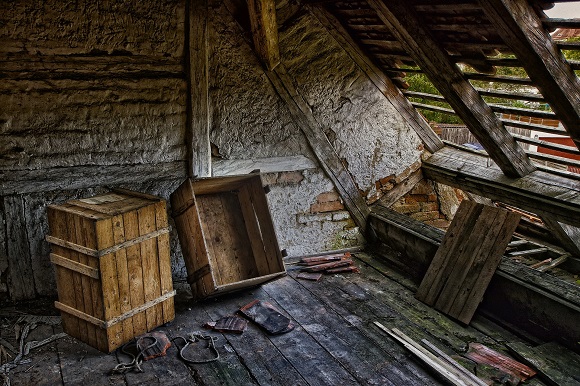

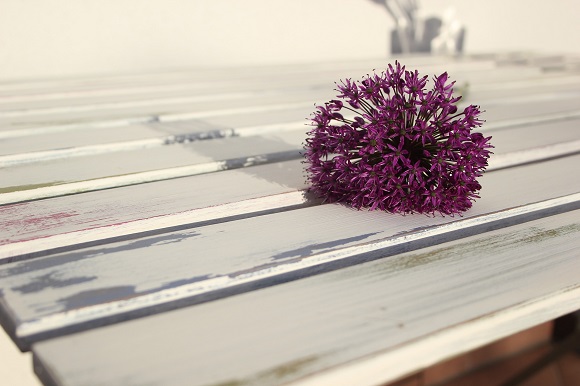
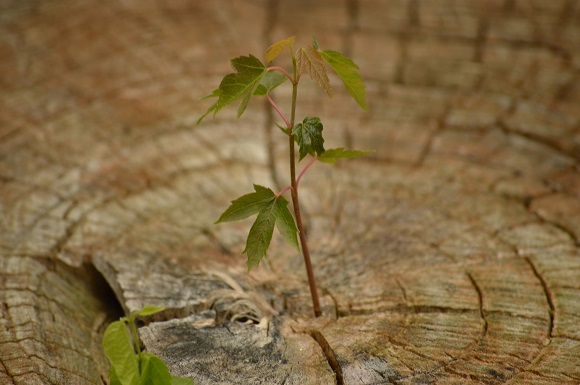
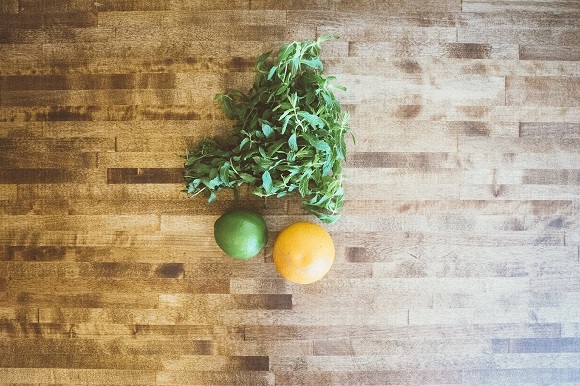


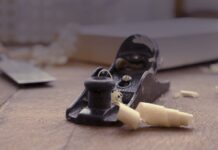


I have a large vintage (80+ yrs) camphor chest with deep carvings. We just inherited it- carvings were deep and filled with embedded dust. I am using soft toothbrush, a-tips and Murphy’s oil soap to clean out the deep entrenched dust. I think great aunts housekeeper used cleaner like early pledge etc leaving buildup in carvings. Carving is in bands- rest of chest’s surface has smooth finish with a “fade” paint going to visible wood.
What can I use on the chest surface and carvings to restore surface, and keep carving from accumulating lots of dust that sticks.
Hello Karen,
I think wax is going to be the best bet for your project. Wax can pretty much be applied over the top of most finishes and many surface types and so you may find this will bring the wood back to life, nourish it and give some protection against dust and dirt build up. I would recommend the occasional clean with a just a brush, to remove dirt and dust. You could give an occasional clean with some thing like the Osmo Spray Cleaner which will not damage the wax.
I would recommend taking a look at the Fiddes Supreme Wax Polish this comes in a clear or coloured finish if you would like to improve any faded areas. If you take a look at this product and do feel free to get back to me with any questions you may have via our contact us page.
Kind regards Samantha.
Thank you!
Karen
Hi there
I have used a section of old walnut kitchen worktop, which had kept perfectly in the shed for years, as an outdoor potting table and used some linseed oil on it. It is now warping and the walnut blocks making up the worktop are coming apart to allow gaps where the adhesive seems to be breaking down. What can I use on it to stop this happening?
Thanks
Dave Holman
Good Afternoon Dave,
I know from my own shed space that the extremes of winter and summer will eventually take its toll on any wooden surfaces, such as potting worktops, shelves and storage. Once the wood starts to warp, it can be difficult to restore, unless you have a range of tools and space to do so. And the process of this is a little out of my field of knowledge I am afraid.
As a quick and possibly temporary fix. I would have to say remove as much exposed and failing adhesive as possible, re glue and clamp the areas effected. This could give you another couple of years with the wood, however those extreme temperatures could make this continue even with the best products applied.
Once you have addressed the adhesive issue, you may find some advice on the woodworking forums a bit more helpful than mine, I would lightly sand the wood, and oil with a good quality garden furniture oil for example Barrettine Garden Furniture Oil to nourish the wood some, its not always a case of the more the better, only apply as much as the wood will absorb.
If you have any questions at all or need further advice please do not hesitate to get in touch via our contact us page.
Kind Regards Samantha.
I have a horizontal Sapele wood rail on my deck. It gets a lot of sun. I originally treated it with a clear Sikkens. It looked beautiful as the mahogany color was enhanced by the Sikkens. The wood started to get lighter, I’m assuming the sun did it. This was about 4 years ago. I have completely stripped and sanded the rail. I am wondering if I use some kind of stain/sealer will it stay the mahogany color? What product and procedures do you recommend?
Thank you for getting in touch with your question Kay,
It will be UV damage that is causing the colour to fade some, and this will continue over time. If you think about the application of treatments to wood as a comparison to the application of Sun cream to people , then a clear product will be like a factor 10, some protection from the sun, but will need fairly regular maintenance. The application of a light colour will increase to a factor 30, much better protection with some maintenance required every now and then, and then to the darker colours, this will be like a factor 50 and so will protect against UV damage far better and for longer.
So the ideal will be to apply a colour, if you can find one that matches the natural colour of the wood all the better as this will not only protect the wood, it will also maintain that desired appearance. Oils that soak in give a natural look and feel to the wood and are great for repelling moisture, the biggest cause of deterioration in woods.
I would recommend taking a look at a couple of Osmo products the Osmo Decking Oil or the two very thin coats are all that is needed to protect the wood, and the benefit of an oil is that it will not peel and flake and you can simply top it up with a fresh coat when needed.
If you take a look at these and please do feel free to get back to me if you have any questions at all and always try a test area first.
Kind regards Samantha.
Hi,
I am in the process of converting a van into a campervan and intend to use softwood (pine) tongue and groove cladding to line the internal sides and roof of the van. I eventually want to give these a whitewashed look so that the grain is still visible but don’t believe doing this with 50% water – 50% matt emulsion would provide sufficient moisture resistance. Am I better to prime the wood first using a translucent primer or is there an alternative product you can recommend for this finish?
Thank you
Good Afternoon Alastair,
Thank you for getting in touch with your question, I do love a campervan makeover and would love to see your results if you get a chance to share.
To get that white transparent look I would recommend an oil. Oils penetrate the surface of the wood, leaving a natural look and feel, that allows you to see the grain of the wood and protects at the same time. I will point you in the direction of another of our Blogs called Beautiful White Wood Finishes for Dreamy Interiors >>> https://www.wood-finishes-direct.com/blog/beautiful-interior-white-wood-finishes-for-dreamy-interiors/ This blog gives some really helpful tips on white finishes and which products to use to achieve the desired level of white finish. Product predominantly from the Osmo Ranges such as the Osmo Polyx Oil Tints in white 3040.
I would recommend the sample size sachets that the product has for test area, just to ensure you get the desired result, the wood type, age and condition will all impact on the result and the oil highlight the natural tones of the wood. The Osmo Oil are very durable and will protect the wood and repel moisture. its easy to apply, clean and maintain over time, so ideal for a well used camper.
If you take a look at the blog and the products mentioned and if you have any questions at all or wish to share some images you can get in touch via our contact us page.
Kind regards Samantha.
What is best to maintain new pre-finished oak veneered interior doors?
Good Afternoon,
With veneered doors, we always recommend taking a look at any paperwork or stickers on the doors that list products not suitable. Some manufacturers do worry about penetrating products effecting the adhesives of the veneer. Using products that are not recommended may invalidate any guarantees that you have with the doors.
A good starting point for products will be a Door Oil such as Osmo Door Oil is suitable for most veneers and will give a natural look and feel to the wood.
If you take a look at this one and please do not hesitate to get back to me if you have any questions via our contact us page.
Kind Regards Samantha.
Hello, we’ve just had our pine doors stripped and a couple of them have come back with scorch marks from historical stripping. Do you have any suggestions for removing the worst of the scorch marks before we refinish the doors? Many thanks
Hello James,
It will really depend on how deep the scorches go. And I would think sanding will be the only way to remove them, starting with a lower grit as this will remove more, see where that gets you, and then come up in grits to get a smoother surface. Finishing with an all over sand of the door will give a more even result, you may find if you just sand the effected area and not the rest of the door you could get an uneven colour result with a finishing product.
Covering with a dark colour will also help disguise any areas that you are unable to remove them from and if you need any help with product choice please do not hesitate to get in touch via our contact us page.
Kind regards Samantha.
Hi,
I have couple of outdoor Bonsai benches, made with pressure treated soft wood, I have left them exposed to elements for a couple of years to weather and allow patina to develop. But now want to provide some protection. As they are regularly watered, algae does obviously develop. They also get quite slippery as consequence.
I want to let natural patina develop still and limited sheen. I was thinking of some form of oil (perhaps with non slip), but I did read somewhere that Oils may encourage algae? Ideally want something that will keep algae at bay as much as possible.
Would very much welcome any suggestions.
ps – thanks for great advice pages, have referred to quite a bit in past. Have just Osmo’d new oak door which is looking very nice.
Many thanks
David
Hello David,
Thank you for getting in touch. I would have to start with recommending a cleaner to remove all the algae the Barrettine Mould and Mildew Cleaner Spray is great for this.
Once you have the wood clean you could either apply a preserver that contains a wax such as the Barrettine Premier Wood Preserver this penetrates the wood and will help to prevent the algae from coming back and contains some wax, which will repel moisture for a while.
Or I would recommend the Osmo Natural Oil Woodstain this is a penetrating oil that requires just two very thin coats to be applied and it will give a moisture repellent finish. It also contains active ingredients to protect against mould, algae and fungal attack. It is predominantly coloured oils as these are the best for protecting against further UV damage. The Clear is also an option, and this will allow the wood to continue to silver, if this is the desired effect.
Because the wood has been allowed to weather for quite a while it is likely that which ever product you do go with the uptake will be higher than the expected. And the result slightly darker than expected, so I would recommend test areas first to ensure you like the result achieved.
And if there is anything further that I can help with please do not hesitate to get in touch via our contact us page.
Kind regards Samantha.
Hello
Ive just had a door frame made of Iruko wood put in. Ive been told by one person to wax it, another to stain it, and another to varnish it! I’m going to try to match it to some skirting board that I will have fitted later on. Any tips/preferences on the finish for this please? I want to keep the wood on show as much as possible to show off its natural look.
Ben
Good Morning Ben,
Iroko is a naturally hard, oily wood and you may find if this is fresh wood that application so soon is not viable. The natural oils in the wood will repel any varnish or paints you try to apply and oils will not penetrate as the wood is already saturated.
Allowing a few weeks for the natural oils to disperse will help. And you can also wipe down with Methylated Spirits first to help with uptake of a suitable product.
For a natural look and feel and a product that is suitable for Iroko, you could have a look at Barrettine Teak Oil which can be topped up regularly to maintain the look of the wood. Or the Osmo Wood Wax Extra Thin which will last longer with just two thin coats required.
If you take a look at these and do feel free to get back to us if you have nay questions.
All the best Samantha.
Hi, I have an exterior bench made from Douglas Fir. It consists of a series of 4×4’s resting on on cantalivered metal brackets bolted into a concrete wall. The original Sikins finish of 10 years ago no longer looks good so I removed the 4×4’s last fall and stored them in the garage for the winter. My intention now is to run them through a thickness planer on all 4 faces to expose fresh wood then sand to 150 grit. Am I on the right track? If so, what HWO would you recommend?
Thanks for your consideration.
Hi Bart,
It sounds like you have this project very much in hand, sanding to a 150 grit is also perfect as it is not too fine. Once planed all that is required is to treat the wood with a wood preserver and then a finishing product. For the preserver, consider Barrettine Premier Universal Preserver. This will help to protect the wood against mould, algae, wood rot and insect attack. Pay special attention to the cut ends and if possible, soak the ends in the preservative for 24 hours to get the best penetration along the wood grain at the ends. Once fully dry, the 4 x 4’s can be treated with a garden furniture oil or decking oil, clear or coloured, again paying special attention to the cut ends.
These oils are durable, easy to apply and maintain. They offer excellent weather protection and will help to keep the wood nourished and supple. To keep the wood protected, simply apply a fresh maintenance coat of oil once or twice a year as required. The beauty of using an oil is that it will never crack, flake, or peel off.
I hope the above helps but if you have any further questions about your project or which products to use, please feel free to contact us at any time.
Kind regards,